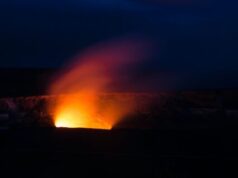Image Credit:Flickr/declanjewell
Significant changes in the distribution of plants on Earth can be a reality by 2050. The prediction is made by scientists from Center for Macroecology, Evolution and Climate at the University of Copenhagen, based on fossilized pollen. The pollen stems from plants that existed during previous periods with climate changes – similar to those expected in this century.
We still cannot physically travel in time, but ancient fossils can – like a time machine – give us knowledge about the past and the future.
In a study published today in Nature, scientists use fossilized pollen to examine the future of biodiversity on Earth under climate change. The scientists predict profound changes in the distribution of plants globally. Lead-author of the study, Associate Professor David Nogués-Bravo from Center for Macroecology, Evolution and Climate at the Natural History Museum of Copenhagen, says,
– Surprisingly, our results forecast major shifts in abundance and composition of plants in forests, grasslands and other plants communities. These transformations will occur already by the middle of this century. It means that our own grandchildren will encounter largely different landscapes compared to those we know today. They will see new species in forests, on prairies and scrublands, while other species, that are common in those areas today, will be gone.
The prediction is based on records of fossilized pollen from plants that lived between 20,000 years ago to present. During this time, ice sheets melted and global temperatures rose by 4 to 5 degrees, similar to the temperature rises expected for this century. Professor Jack Williams from the University of Wisconsin-Madison, co-author of the study, elaborates,
Find your dream job in the space industry. Check our Space Job Board »
– The fossil record gives us a natural model system for studying species responses to climate change. We can see that ecosystems were transformed by past climate changes, for ecosystems both on land and in waters – and across many regions. Thus, we can expect similarly profound changes throughout the Earth.
The records of pollen used in the study comprised 100 European plant taxa from 546 sites, and 87 North American plant taxa from 527 sites. The study shows that one third of North American plants and more than half of European plants may face increased threat status in the future due to climate change. Central North America and southern Europe are the most exposed regions.
– The findings of our study based on paleorecords highlight the vital importance of biological archives. Archives like those at Natural History Museums, Botanical Gardens and digital internet databases. They provide conservation assessments directly relevant and useful for conservation policies of today and for the future, concludes Professor Carsten Rahbek, senior-author on the article.
Source: University of Copenhagen
Journal Reference:
Amplified plant turnover in response to climate change forecast by Late Quaternary records, Nature Climate Change, DOI: 10.1038/nclimate3146











